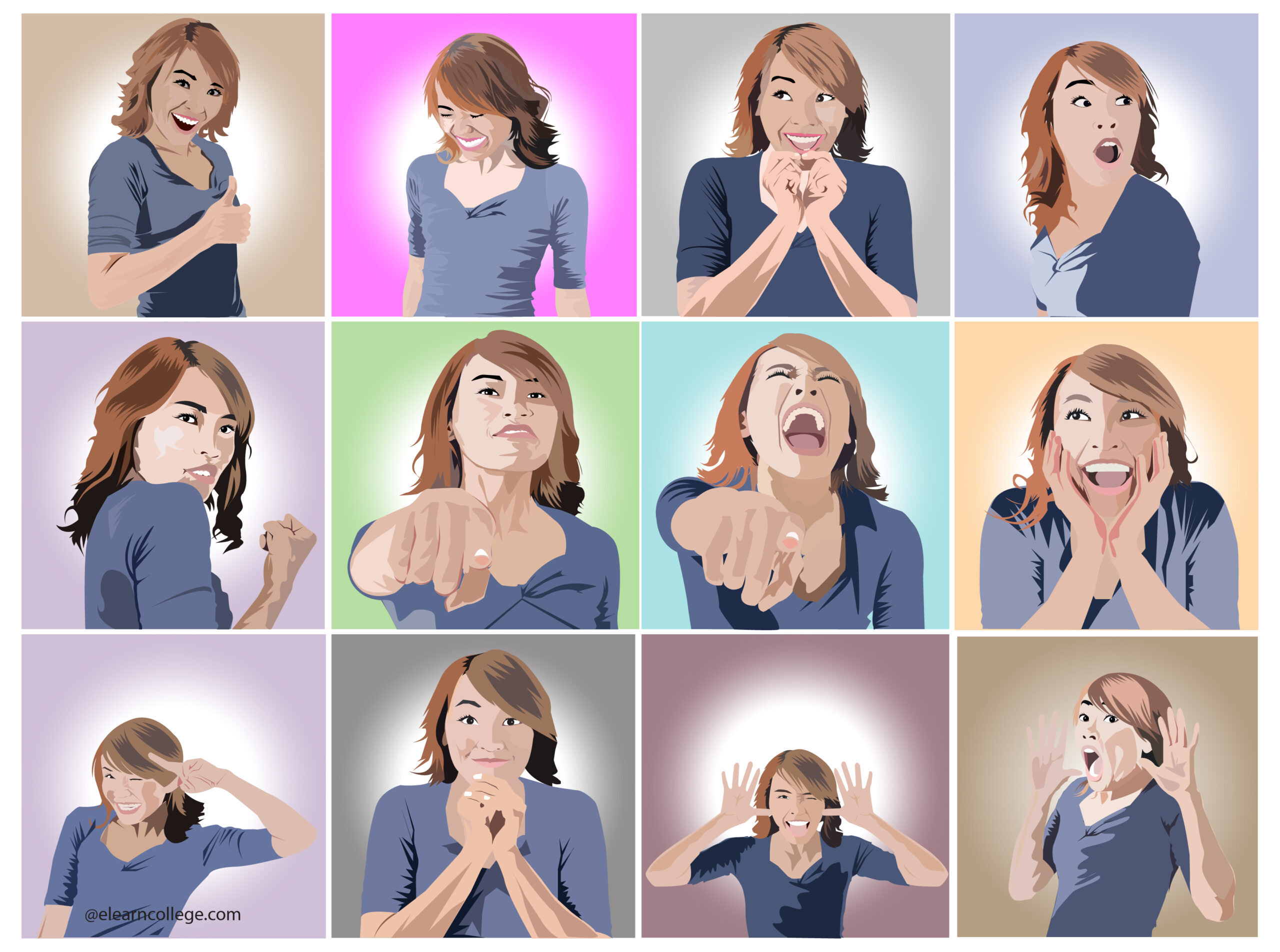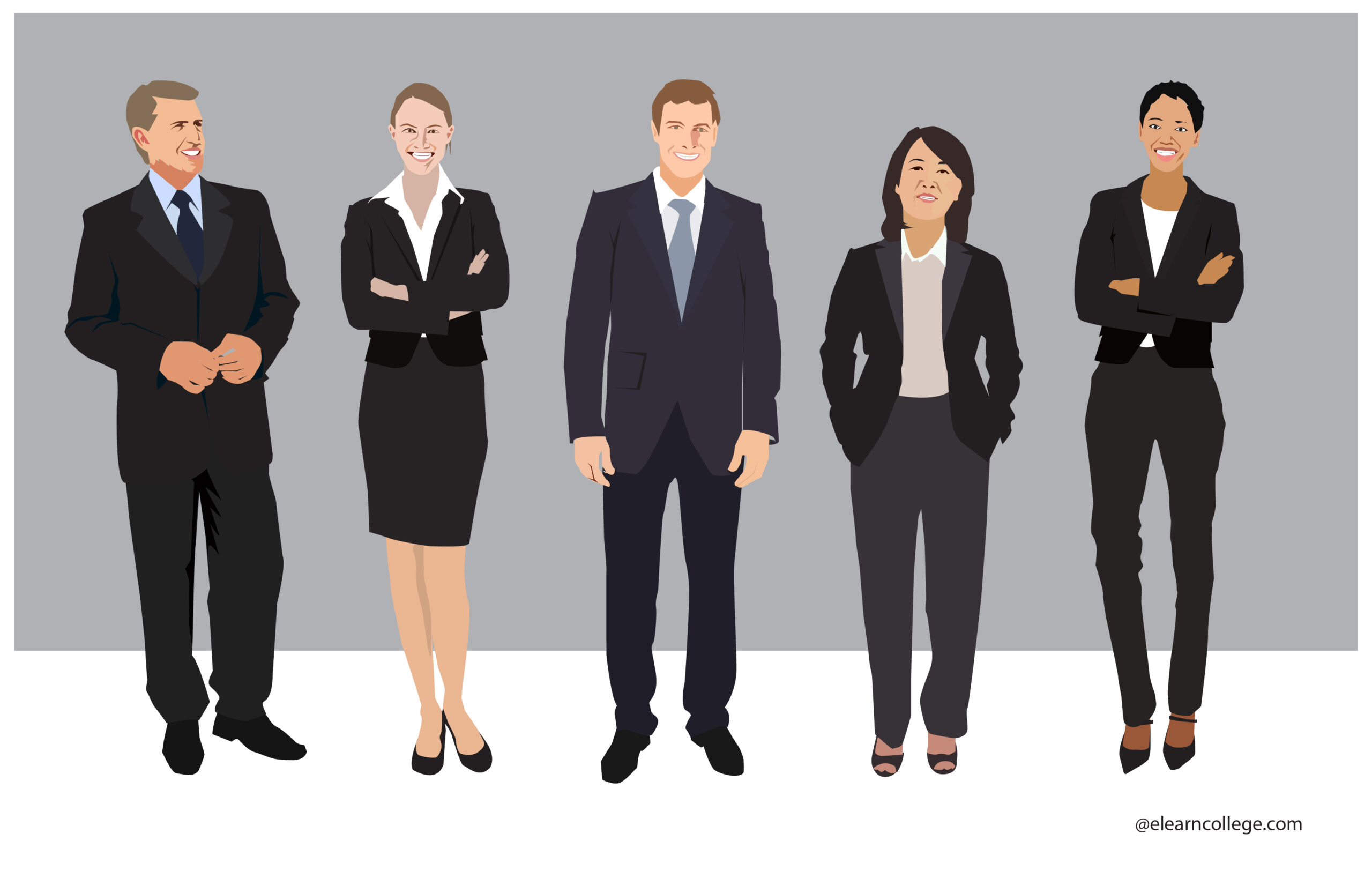- No products in the cart.
Comprehending body language
Communication does not comprise structured sentences, words, or syllables. There are deeper connotations to the term. The above mentioned verbal communication symbols and structures are half of the story.
There is non-verbal communication; it comprises various body language communication gestures.
Here we will explore the importance of non-verbal body language communication. We aim to find ways to maximise the efficiency of body language communication.
The vernacular of the human body
In general terms, the vernacular of the human body is the non-verbal part of communication. It contains the speaker's genuine emotions and intentions. The moderate facial look turns into a good smile with the mouth rising and the eyes creased.
A slight change in the angle of the head is indicative of a keen listener. And, sitting or standing shows interest. These two are positive body language gestures of attraction.
But, a stance with arms crossed or continuous tapping of the feet are examples of negative body language communication.
As the recipient learns to comprehend the meaning of these signs, communication becomes more effective.
This also lets the participants know others' reactions to their speech and action. Mastering the vernacular of the body enables us to reform ourselves. This helps us to project more positivity and become more acceptable and engaging.
The Science Behind Body language
On a usual count, only seven per cent of the whole idea gets conveyed through verbal communication. The rest of the ninety-three per cent happens via body language communication gestures. This concept has been adopted from Mehrabian's Communication Model.
This also shows the pivotal role body language communication has in communicating emotions. Thus making body language communication an integral part of verbal communication.
This point helps us understand why it is difficult to communicate emotions in a phone call. This is the same reason why salesmen prefer face to face conversations.
Understanding Body language
You will find more depth in normal verbal conversations as you get to know body language communications. Some of the gestured signals which ought to be emphasised are discussed below.

Instances of Body language from convoluted conversations
Awkward conversations destroy the gist of the process of communication and make it more uncomfortable. Anxiety, pressure, or frustration may make dealing with rude people difficult. Even if we try to bury these deep feelings, they surface and convey through our body language communication gestures.
A person having any or all the following closed body language communication gestures are more likely to be indifferent and miserable:
- Arms crossed and folded.
- Least or strained facial expressions
- Repulsive body poses
- Rejecting or avoiding eye contact.
As one gets aware of these hidden signs, we can work on communication and start finding ways to make the process less stressful and more efficient. It helps us reduce our strain and have a better conversation together.
Body language of Uninterested Listeners
Your goal as a speaker is to maintain audience attention, engage them, and create an atmosphere conducive to successful communication.
You can understand that your listeners are losing interest in the topic discussed if you are looking out for the following gestures in them:
- Being seated in an awkward posture, the head pointing downwards.
- Lack of eye contact, gazing into space, distracted by thoughts.
- Scrawling and scribbling. Wriggling, tampering with whatever material they can find.
Learning Body Language communication Gestures of Positivity
The speaker usually adopts body language communication gestures of positivity to put forward an argument, transfer ideas more, and avoid confusion and ambiguity.
Body language for a Good First Impression
The following points play a decisive role in creating an excellent first impression:
- Having a forthright stance- be relaxed but take care not to stoop. While seated and standing, keep your back straight and keep your hands close to your body by your sides. Any gesture with your hands-on-hips indicates a tendency to get hostile or to be in power.
- Shake hands firmly- watch out not to overcommit. Don't let a gesture of greeting create uneasiness and embarrassment for the other person.
- Eye contact is a must. Intermittent eye contact re-affirms your sincerity and indicates you mean business. Do not stare into the eyes of the other person long enough so that it becomes uneasy and awkward.
- Avoid patting and caressing your face- as it indicates hiding facts and being dishonest. Even though the depth and extent of the meaning conveyed may differ in different situations, it is always advisable to keep your hands away from your face to support your credibility.
Body language communication gestures and The Art of Constructive Public Address
Positive body language communication gestures assist the speaker in keeping the audience engaged, overcoming stage fright, and demonstrating public speaking proficiency. A few of the notable points that positively influence the art of public speaking are:
Have an optimistic stance- avoid clumsiness while you sit or stand. Shoulders back, arms straight and unfurled, by sides or in front. Heads up, the head should be straight and postured.
Try not to look dominant or hostile by leaning too far in either direction. Practice makes a man perfect to practise these stances alone, preferably in front of a mirror. Try maintaining a calm and composed stance by keeping your weight distributed.
One foot behind the other gives a good body balance. Open hand signs radiate positivity. Liberal postures such as spreading hands toward the audience indicate generousness and readiness to communicate and exchange thoughts. These body language communication gestures may become over-expressive if not properly practised, and the audience may become more interested in your postures than your ideas.
Body language for Interviews and Mediation
The emotional over-ride or adrenaline surge that many people feel during difficult circumstances is natural. A calm and collected body language keeps the situation under control. During interviews or productivity evaluations, anxiety and stress accumulate.
The following methods are very effective in handling this:
Mirroring- this implies imitating or copying the Kinetics of the other person involved in communication. Copying every gesture will be awkward and create uneasiness rather than making them feel comfortable and building a rapport. Maintaining composure and a calm and composed body reflects confidence and receptiveness. A slow breathing cycle and still body posture are necessary to achieve this. Look focused- when being questioned or challenged, feel your cheek or caress your chin to make them understand that you are pondering on the answer.
Virtual Body language
Virtual media platforms for interaction, such as video calls, follow most of these principles of Kinetics. The significant difference that one may feel as a participant is between space and body. This difference can potentially lessen the efficiency of the communication process.
To overcome this virtual barrier, one may consider the following points to express the spirit and make others feel secure and acceptive: Positioning the camera unit implies that your ideal positioning with the camera unit should suffice to show your aptitude. Position the unit with ample room for sings and gestures. Workspace cleanliness and ambience- try to minimise the external factors that may distract you from the communication process, thus reducing the efficiency of the process.
A clean and peaceful workspace will help you concentrate more on the interaction process, thus re-affirming the person at the other end of your attentiveness. The tool of eye contact- try visualising the camera lens as the other person's eyes.
Even though it may feel awkward to stare at a black dot, it will positively influence others. On the other hand, prolonged staring will be uncomfortable and disturb both the participants.While addressing a larger group audience virtually, try to shift your gaze to different participants so that none of them feels neglected. Use of facial body language communication gestures, gestures of positivity. Whether a grin that affirms pleasantness or raised eyebrows that indicate curiosity help in creating an environment suitable for effective interaction. Since the face occupies most of the space on a virtual platform, facial gestures play a significant role.
How to Use Body Language In Communication
Though the ideas discussed above are universal, it varies slightly from person to person. People from diverse cultures may have different interpretations of the same gesture.In cases of ambiguity, it is always better to talk and sort things out than to entirely rely on the theories of body language interpretation. Body language and its studies are never meant to over-ride or substitute verbal communication and its constituents; instead, its sole aim is to compliment the process itself, thus making it more efficient.
Conclusion
The article affirms that non-verbal communication has an immense role in your everyday life. The facts discussed above will be a mirror for you. You will be able to reflect on yourself and analyse your body language communication gestures, and have a transformed personality.

